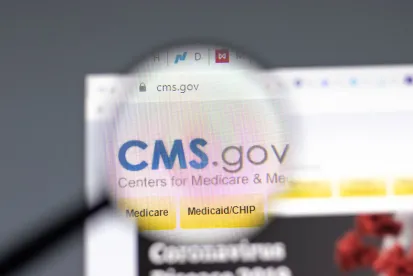In its Calendar Year (CY) 2024 Physician Fee Schedule (PFS) proposed rule, the Centers for Medicare and Medicaid Services (CMS) proposes to continue to allow supervising physicians and practitioners to conduct “direct supervision” for Medicare Part B purposes through real-time audio and visual interactive telecommunications through December 31, 2024. The move, if finalized, will extend one of the key flexibilities CMS promulgated in response to the Public Health Emergency for COVID-19 (PHE).
To be payable under Medicare Part B, certain types of services must be furnished under specific minimum levels of supervision by a physician or practitioner. This includes most services furnished by auxiliary personnel incident to the services of the billing physician or practitioner (See 42 C.F.R. § 410.26.) and many diagnostic tests. (See 42 C.F.R. § 410.32.)
Prior to the PHE, the definition of “direct supervision” required the supervising professional to be present in the office suite and immediately available to furnish assistance and direction throughout the performance of the procedure. That is, direct supervision required the in-person, physical—not virtual—availability of the supervising professional. However, in response to the PHE, CMS changed the definition of “direct supervision” to allow the supervising professional to be immediately available through “virtual presence” via two-way, real-time audio/video technology. This temporary change gave supervising professionals flexibility to conduct “direct supervision” remotely under certain circumstances but was set to expire at the end of 2023.
The CY 2024 PFS proposed rule acknowledges that, beginning after December 31, 2023, healthcare professionals and industry stakeholders face an “abrupt transition” to CMS’s pre-PHE policy of requiring the in-person presence of professionals conducting direct supervision. Accordingly, CMS proposes to “continue to define direct supervision to permit the presence and ‘immediate availability’ of the supervising practitioner through real-time audio and visual interactive telecommunications through December 31, 2024.”
In support of its proposal, CMS notes the new patterns of practice that practitioners established during the PHE for COVID-19, the absence of evidence that patient safety is compromised by virtual direct supervision, and the agency’s concern that an immediate reversion to the pre-PHE policy could limit access to many services. CMS also believes physicians and practitioners need time to reorganize their practice patterns to reimplement the pre-PHE approach to direct supervision without the use of audio/video technology. Further, the proposed extension aligns with many other PHE-related telehealth policies enacted by Congress.
CMS intends to use the additional time to collect more information as it considers a more permanent approach to its direct supervision policy. To this end, the agency solicits comments on whether it should permit direct supervision through virtual presence beyond December 31, 2024. In particular, CMS asks for comments on a potential approach for CY 2025 that could permanently establish the virtual presence flexibility for services that are valued under the PFS based on the presumption that they are nearly always performed in entirety by auxiliary personnel. According to CMS, these services would include any service wholly furnished incident to a physician or practitioner’s professional service, as well as certain types of outpatient evaluation and management or emergency department visits. CMS believes that allowing direct supervision through virtual presence for these services could balance patient safety concerns with the interest of supporting access and preserving workforce capacity for medical professionals while considering potential quality and program integrity concerns.




 />i
/>i
